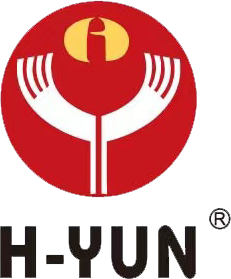Basic Raw Materials
Time:
2023-05-25
The basic raw materials for our PVC gloves include: PVC paste resin, plasticizers (DOP/DINP), viscosity reducer (solvent naphtha), heat stabilizer, colorant and filler.
The basic raw materials for our PVC gloves include: PVC paste resin, plasticizers (DOP/DINP), viscosity reducer (solvent naphtha), heat stabilizer, colorant and filler.
PVC Paste Resin
PVC, short for polyvinyl chloride is a polymer compound made of vinyl chloride monomer (VCM), whose degree of polymerization can be controlled by the reaction temperature and polymer molecular weight regulator.
Physical Properties of PVC Paste Resin
Appearance: White powder
Molecular weight: 40600-111600
Density: 1.35-1.45 g/mL
Apparent density: 0.4-0.65 g/mL
Specific heat capacity (0-100℃):1.045-1.463 J/(g. ℃)
Thermal conductivity: 0.1626 W/(m.k)
Refractive index: nD20=1.544
diameter: Compact (XJ) type 30-100 μm; loose (SG) type: 60-150 μm ~150um, paste resin 1.2-2 μm
Softening point: 75-85℃
Thermal decomposition point: >100-120℃ begins to degrade to yield hydrogen chloride
Solubility: Insoluble in water, gasoline, alcohol and vinyl chloride, but soluble in ketones, esters and chlorinated hydrocarbon solvents.
Toxicity: Non-toxic and odorless
Plasticizers
Plasticizers are the largest additives in the modern plastics industry, and play a decisive role in promoting the development of the plastics industry, especially the polyvinyl chloride industry. Plasticizers refer to the liquid organic compounds or low-melting-point solids which: mix evenly with the resin; have no chemical changes when mixing, but can reduce the glass transition temperature of the materials and the melt viscosity during plastic molding process, and maintain themselves unchanged; or have chemical changes but can be retained in plastic products for a long time and change some physical properties of the resin.
Plasticizers can reduce modulus of elasticity and tensile strength at break, increase
extensibility and elongation at break, improve flexibility, reversible bending strength, and toughness and impact strength, reduce glass-transition temperature, expand the polymer’s applicability at lower temperatures, improve adhesion to various basic materials, improve or reduce film sealability, improve lubrication and reduce friction, reduce electrostatic charging capability, improve surface gloss and appearance. plasticizers are the most common plasticizers.
Plasticizers are organic substances that increase the plasticity of plastics, improve the flow of resins during molding processing, and make products flexible. Commonly used plasticizers include phthalate esters such as DOP, DINP and DIDP.
Heat Stabilizers
Polyvinyl chloride (PVC) itself has no apparent melting point and begins to soften at 80°C-83°C and begins to flow when heated to 180°C. At >120℃, it starts to thermally decompose, so it starts to decompose before it reaches its flow and melting points, and gradually turns from yellow to black! There is no way to make products from polyvinyl chloride! This is a chemical reaction in which hydrogen chloride (HCL) is released when PVC is heated, based on which as long as HCL is not released quickly, the product can be prevented from turning yellow and scorching during processing. In this case, a heat stabilizer comes in handy by virtue of capturing HCL to produce dehydrochlorination reaction!
Calcium and zinc compound stabilizers have gained universal recognition due to the public’s pursuit of environmentally-friendly, non-toxic, hypotoxic, efficient, lead-free and cadmium-free products with moderate price. The market of calcium and zinc stabilizers are gradually expanding.
Viscosity Reducers
Viscosity reducer is a commonly used name for a diluent for reducing the viscosity of PVC paste resins. It’s actually “dearomatized solvent naphtha”.
According to the boiling range, solvent naphtha can be divided into three categories: low-boiling solvent naphtha, such as 6# extractant with a boiling range of 60-90℃; medium-boiling solvent naphtha, such as rubber solvent naphtha with a boiling range of 80-120℃; high-boiling solvent naphtha, such as paint naphtha with a boiling range of 140-200℃.
Stainers
Stainers can be used for dyeing PVC into various colors. They mostly use oil-soluble organic pigments and inorganic pigments, the amount used is about 0.01%-2% of the resins.
VI. Fillers
The main function of fillers is to reduce costs, save the amount of PVC, and improve product performance. Commonly used fillers include calcium carbonate, clay and diatomaceous earth.

Company Address: Pachigang Industrial Park, Luannan County, Tangshan City, Hebei Province, China
Sales line:+86-315-4423860
Business department telephone:+86-315-4426258
After-sale service department:+86-315-4422286
Cell phone:+86-18832501108、+86-18633310888
Fax: +86-315-4426258
postcode: 063500
Email:tshongyun@tshongyun.cn
Copyright:Tangshan Hongyun Healthcare Products Co., Ltd. Powered by 300.cn | Taglist




